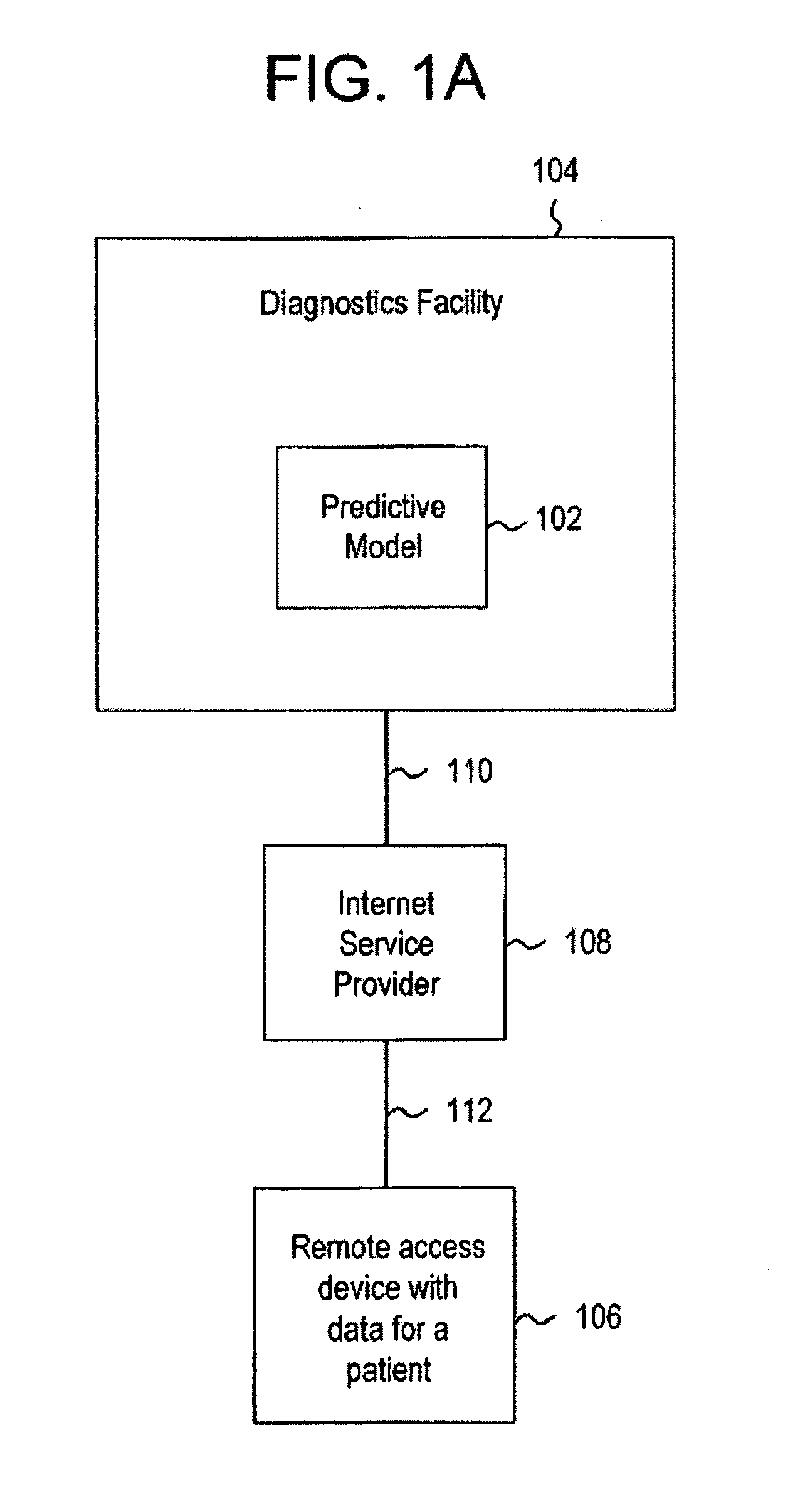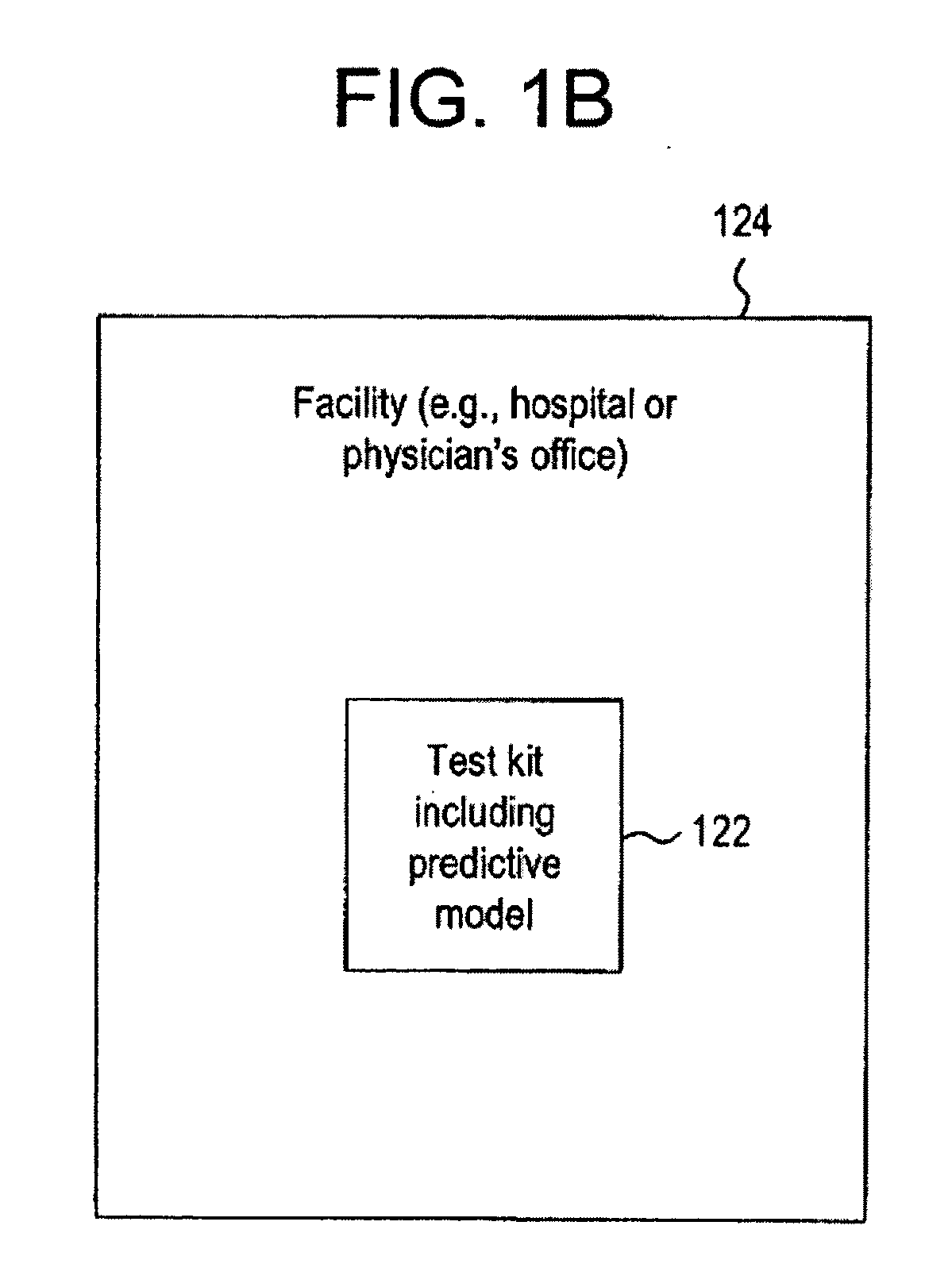Systems and methods for treating, diagnosing and predicting the occurrence of a medical condition
- Summary
- Abstract
- Description
- Claims
- Application Information
AI Technical Summary
Benefits of technology
Problems solved by technology
Method used
Image
Examples
example
Prediction of Prostate Cancer Progression
[0133]In accordance with an illustrative embodiment of the present invention, a predictive model was developed for use on diagnostic biopsy cores of prostate tissue, where the model predicts the likelihood of advanced prostate cancer progression even after a curative-intent radical prostatectomy. This predictive model was developed from data on a multi-institutional patient cohort followed for a median of 8 years. Features evaluated in connection with generating the model included morphometric features extracted from the diagnostic prostate needle biopsy, molecular features corresponding to an expanded in-situ biomarker profile, and several clinical features. The predictive model may be utilized, for example, at the time of diagnosis of prostate cancer and before treatment, to provide an objective assessment of the patient's risk of prostate cancer progression. It is believed that the model resulting from this study, which accurately predicts...
PUM
 Login to View More
Login to View More Abstract
Description
Claims
Application Information
 Login to View More
Login to View More - R&D
- Intellectual Property
- Life Sciences
- Materials
- Tech Scout
- Unparalleled Data Quality
- Higher Quality Content
- 60% Fewer Hallucinations
Browse by: Latest US Patents, China's latest patents, Technical Efficacy Thesaurus, Application Domain, Technology Topic, Popular Technical Reports.
© 2025 PatSnap. All rights reserved.Legal|Privacy policy|Modern Slavery Act Transparency Statement|Sitemap|About US| Contact US: help@patsnap.com



